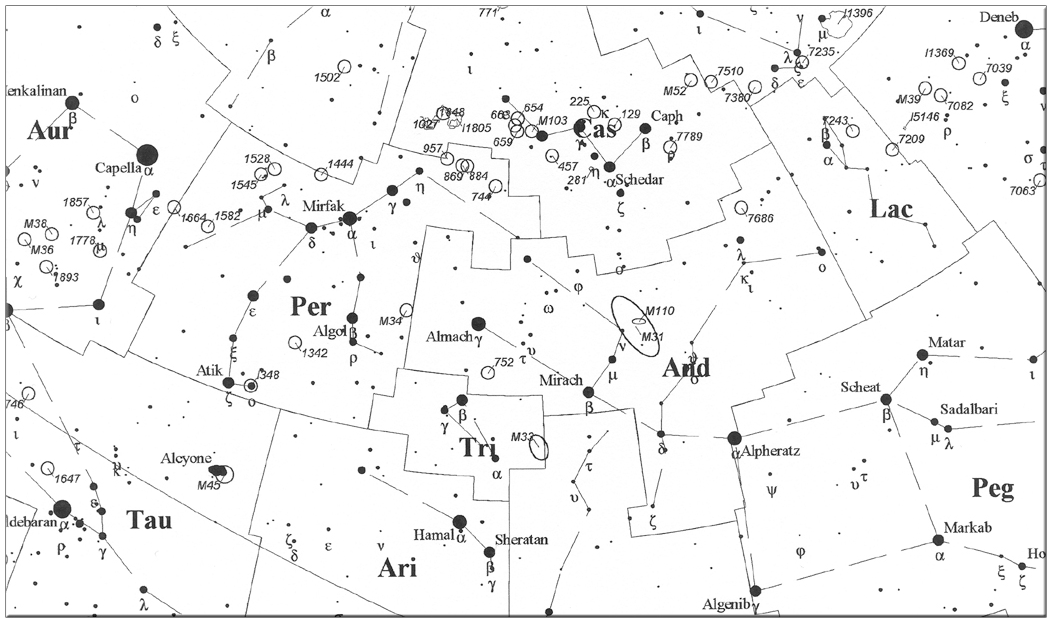At sundown the Autumn sky is dominated by the great square of Pegasus. The stars of the square are jumping off points for many deep sky objects. There are several binocular objects that are also naked eye if one can make it to dark skies. The northeast star of the square is the star Alpheratz, which is actually in the constellation Andromeda. If one moves east to Mirach then north one comes to The Andromeda Galaxy, M31. M31 is a naked eye object at mag 4.4 and over 4 degrees in size. In comparison, a closed fist at arms length is 5 degrees in size. It’s large!! In binoculars and small telescopes The galaxy is seen only as a blur, a far cry from the photos one sees in magazines. In a little larger scope, one can see two companion galaxies, M32 and M110. M32 is a round mag 9.0 blob seen close to the central core of M31. On the opposite side of the core of M31 is a faint oval, M110 at mag 8.8. the orientation of the axis of M110 is nearly at a right angle to the M31 long axis.

M33 is another large galaxy east of M31. M33 is spread out over several degrees, and although it has a mag of 6.3, Its surface brightness is low, making it hard to see, even with binoculars and telescopes. M33 is reportedly easier to see with binoculars than telescopes. It can be located by first trisecting a line from alpha Triangulum to Mirach in Andromeda, then looking just south of the division between the eastern and middle thirds.
Another binocular object that also looks great in small telescopes is M34 in Perseus. This is a mag 5.2 open cluster just west of the middle of a line drawn between Almach in Andromeda and Algol in Perseus. A telescope only object northwest of M34 is M76, also known as the “Little Dumbbell” nebula. The overall size is small and one can only expect to see a small, squarish patch of light. Larger scopes will reveal a bi-lobed shape.
On Perseus’ northern edge lies the famed double-cluster. Many are amazed that Messier missed this naked eye and (easy) binocular object. It looks beautiful in small to medium scopes as long as low powers and wide field eyepieces are used. As Messier missed it, it doesn’t have an M designation, but goes by NGC869/884.
If we continue a little further north, we come to Cassiopeia, The Queen. Its distinctive W shape is easily seen at this time of year north of Polaris, the Pole star. There are two Messier Objects in Cassiopeia. M52 is an open cluster found north of the western tip of the W. M103 is a smaller, tighter open cluster along the W eastern portion.
